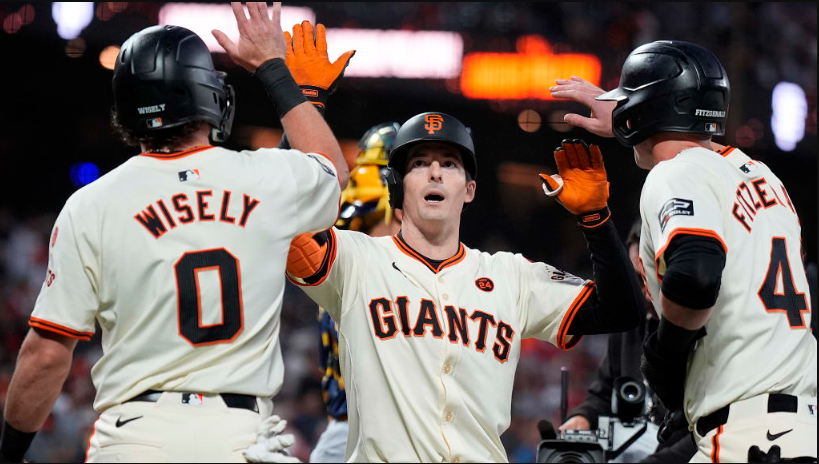
SF Giants must decide if hard-throwing pitcher will rejoin rotation in 2025
Can he improve upon his mixed results in 2024?
The San Francisco Giants find themselves at a crossroads as they head into the 2025 season, faced with a significant decision regarding hard-throwing pitcher Jordan Hicks. After conducting an ambitious experiment in 2024 that saw Hicks transition from his established role in the bullpen to the starting rotation, the results proved to be a mixed bag. Initially, the move appeared to be a masterstroke by the Giants’ front office, showcasing Hicks as one of the team’s most effective pitchers. However, as the season progressed, questions emerged about his long-term viability as a starter. With the dawn of a new season on the horizon, the Giants must carefully weigh their options: should Hicks return to the rotation, or would his skills be better utilized in a relief role?
When the Giants made the decision to insert Hicks into the starting rotation, there was palpable excitement. In the early weeks of the season, Hicks lived up to the expectations. He dazzled fans and critics alike with his fastball, regularly hitting the upper 90s and even reaching triple digits on occasion. His performance in April was nothing short of spectacular. By the end of the month, he boasted an impressive ERA of 1.49, firmly establishing himself as arguably the team’s best starter. Every outing saw him go at least five innings, showcasing not just his velocity but also his ability to manage games effectively.
Hicks’s early success ignited discussions about the possibility of him becoming a cornerstone in the Giants’ rotation for years to come. His high strikeout rates and ability to dominate hitters raised the hopes of fans and analysts alike. The front office had envisioned a scenario where Hicks would be a key figure in the rotation, complementing other talented pitchers and anchoring the team’s pitching staff for the future. The decision to invest in him as a starter seemed to pay immediate dividends, leading many to believe that the experiment could revolutionize the Giants’ pitching strategy.
However, the bloom began to fade as the season dragged on. With the arrival of summer, Hicks’s performance took a noticeable downturn. By the end of July, his ERA had ballooned to 4.11, a stark contrast to his early-season success. As the dog days of summer set in, the wear and tear of a starter’s workload began to manifest. Hicks struggled to maintain his velocity, and the effectiveness that had once defined his pitching was increasingly elusive. The struggles weren’t just a statistical anomaly; they were indicative of a larger issue: fatigue.
Recognizing the signs of fatigue and the toll that the season was taking on Hicks, the Giants made the prudent decision to shift him back to the bullpen around mid-season. This move was not just a retreat but a strategic realignment, allowing Hicks to regain his strength and continue contributing to the team in a role where he had previously thrived. Prior to the 2024 season, Hicks had primarily served as a bullpen pitcher, and his familiarity with that role allowed for a relatively smooth transition back.
As a reliever, Hicks found his rhythm once again. In August, he was effective out of the pen, allowing just one earned run. The short outings revitalized him, and he was able to regain some of the velocity that had diminished during his time as a starter. This revival was a relief for both the team and the fans, as Hicks showcased the potential that had made him a coveted pitcher in the first place. However, the decision to move him back to the bullpen came with its own set of implications for the future.
Hicks’s season ended on the injured list, a circumstance that, while disappointing, may have ultimately been for the best. It provided him with the necessary time to rest and recover, particularly after a season that had seen him log 109 and 2/3 innings pitched—far more than he had previously accumulated in any single season. The physical toll of transitioning to a starting role had become evident, and the time off could help him return healthier and more effective for the next campaign.
As the Giants now look ahead to 2025, Hicks’s mixed results create a compelling dilemma for the front office. They must weigh the potential benefits of reintroducing him to the rotation against the risk of fatigue and diminished effectiveness. The reality is that while Hicks proved he could be an effective starter, the concerns regarding his stamina and ability to sustain high performance over a long season loom large.
The newly minted front office led by Buster Posey faces a delicate balancing act. On one hand, they may consider giving Hicks another opportunity in the rotation, believing that he can build on the flashes of brilliance he demonstrated in 2024. The upside is tantalizing: a dominant starter with the potential to anchor the pitching staff. On the other hand, the financial implications of Hicks’s contract—set at $12.5 million annually for the next several years—add an extra layer of complexity to the decision. If the Giants opt to keep him in the bullpen, he would remain an expensive option, but one that might deliver more consistent value over the course of the season.
Should the Giants decide that Hicks is best suited for the bullpen, they could capitalize on his ability to throw high-velocity pitches in shorter bursts, which has historically been his strength. In this role, Hicks could serve as a valuable asset, not just as a long reliever but potentially in high-leverage situations, where his overpowering fastball could prove to be a game-changer. The bullpen is often a crucial component of a successful team, and Hicks’s presence could help solidify that area, allowing other pitchers to take on different roles as needed.
Ultimately, the decision regarding Hicks will hinge on how the front office views his future potential and what they believe is the best way to maximize his talents. The Giants are in a unique position where they have the opportunity to explore various options and see how Hicks fits into their long-term plans. They could even consider a hybrid approach, allowing him to make spot starts or serve as a “bulk” pitcher in games where the starter struggles. This would allow Hicks to contribute without overtaxing his arm, balancing the need for effective pitching with the necessity of managing his workload.
Additionally, the Giants must also consider the development of their younger pitchers and how Hicks fits into the overall picture. If other arms within the organization show promise, the front office may feel more inclined to keep Hicks in a relief role while allowing younger pitchers to take their place in the rotation. This could be a strategic way to cultivate talent while still leveraging Hicks’s experience and skills.
As the Giants head into the offseason, they will be closely monitoring Hicks’s recovery and physical condition. The medical staff will play a pivotal role in determining whether he can return to a starting role or if his future lies in the bullpen. The offseason provides an opportunity for Hicks to focus on conditioning and building up his arm strength, which could ultimately influence the decision-making process.
However, the San Francisco Giants find themselves grappling with a significant choice regarding Jordan Hicks as they prepare for the 2025 season. The experiment of moving him to the starting rotation produced initial success but ultimately highlighted concerns about stamina and fatigue. With the new front office under Buster Posey, the organization must carefully assess how to best utilize Hicks’s talents moving forward. Whether they opt to give him another shot as a starter, keep him in the bullpen, or explore a hybrid role, the decision will be pivotal in shaping the Giants’ pitching landscape in the years to come. As they weigh their options, one thing is clear: the future of Jordan Hicks will play a crucial role in the Giants’ ambitions for a successful season ahead.


Leave a Reply